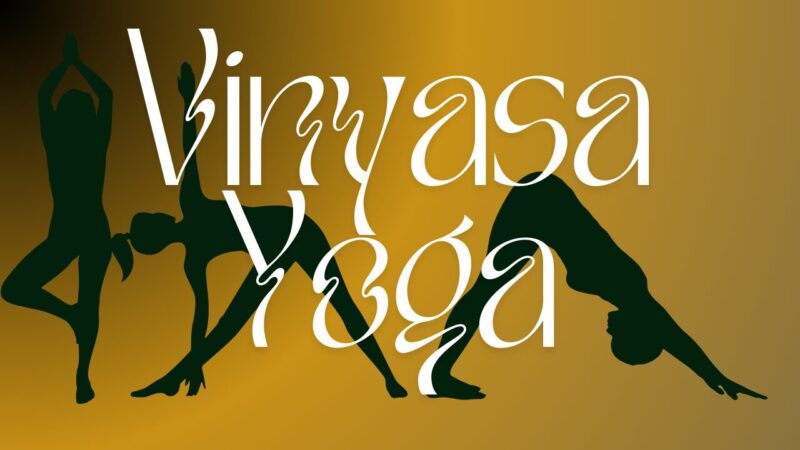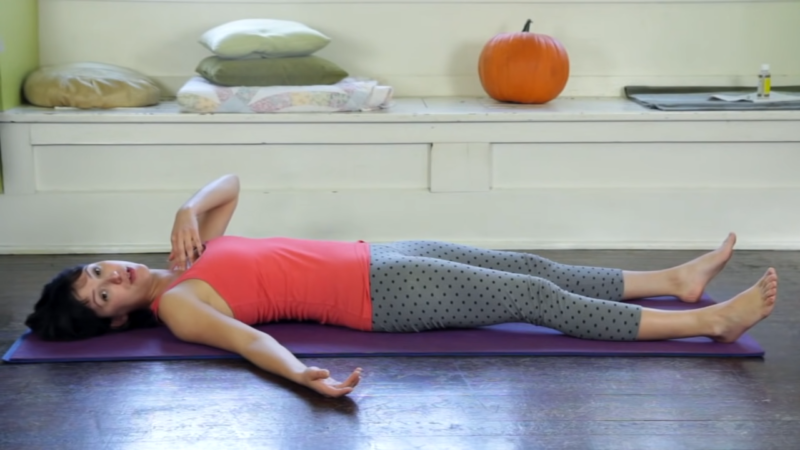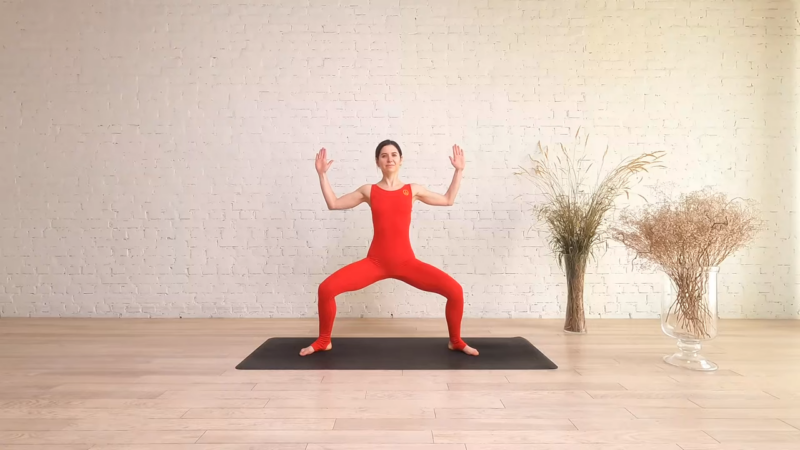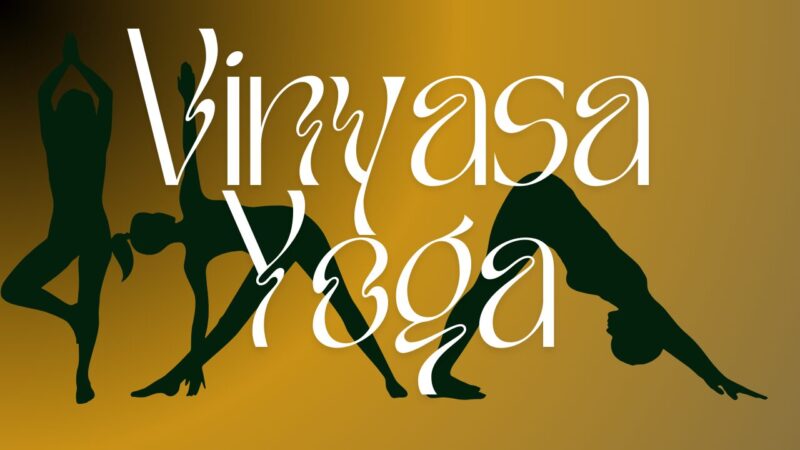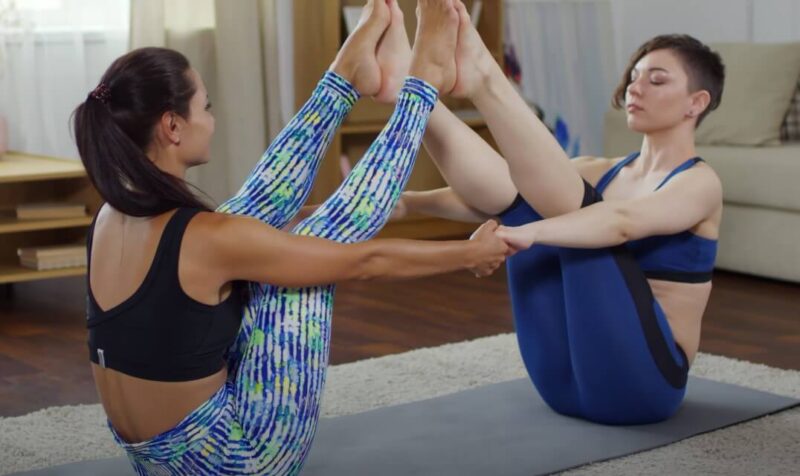
Share Post:
If you’re new to yoga or looking to spice up your routine with a partner, you’ve come to the right place. Partner yoga is not just fun, but also a fantastic way to deepen your stretches and build trust.
Today, I’m sharing my favorite 10 easy 2-person yoga poses for beginners. Grab a friend, a family member, or your significant other, and let’s get started!
1. Partner Breathing
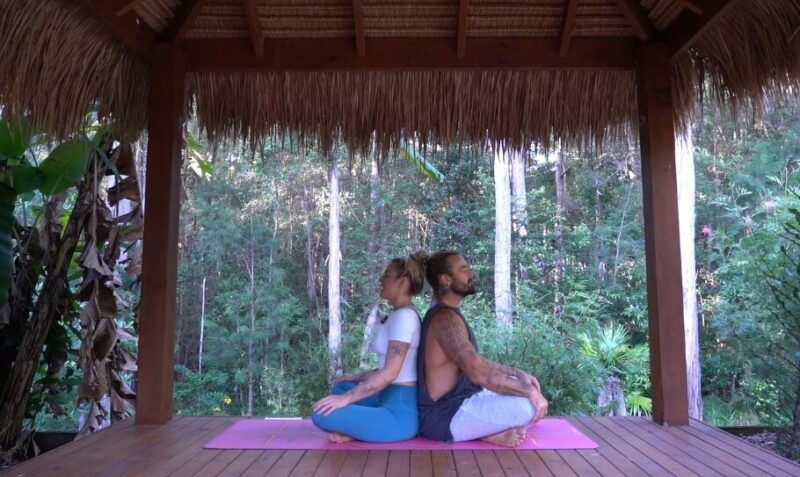
Let’s ease into our session with something simple yet powerful: partner breathing. Sit back-to-back with your partner, crossing your legs in a comfortable seated position.
Close your eyes, place your hands on your knees, and begin to synchronize your breath. Inhale deeply through your nose, feeling your back rise against your partner’s. Exhale slowly. Repeat for a few minutes.
2. Seated Forward and Back Bend
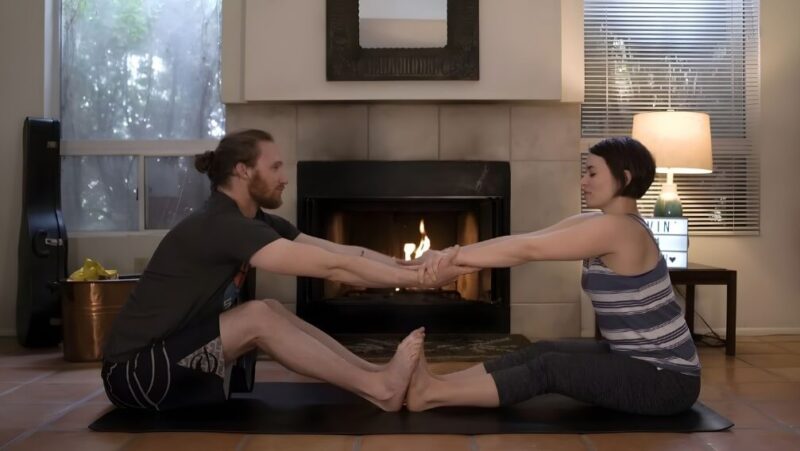
Now that you’re in sync, let’s move on to a gentle stretch. Sit facing each other with your legs straight out and feet touching. Hold each other’s wrists.
One partner will hinge forward at the hips while the other leans back, feeling the stretch in their hamstrings and lower back. Hold for a few breaths and then switch.
3. Double Downward Dog
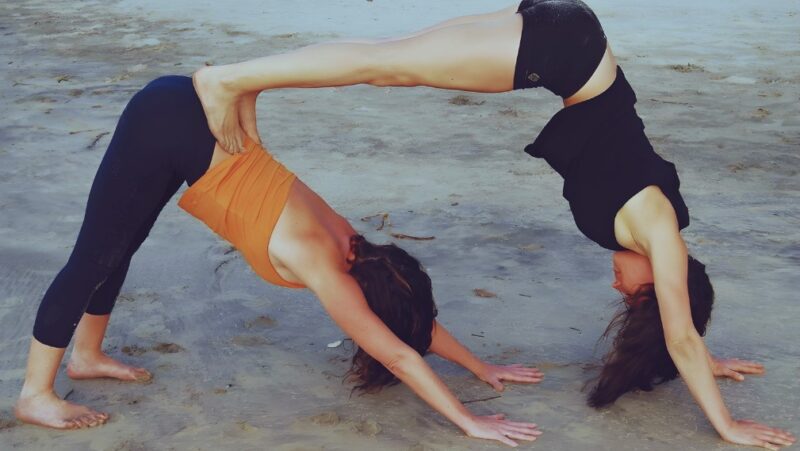
This pose adds a bit of fun and challenge. Start in a standard downward dog position.
Your partner will place their hands a few feet in front of yours and carefully place their feet on your lower back, creating a double downward dog. Hold for a few breaths, then switch places.
4. Partner Boat Pose
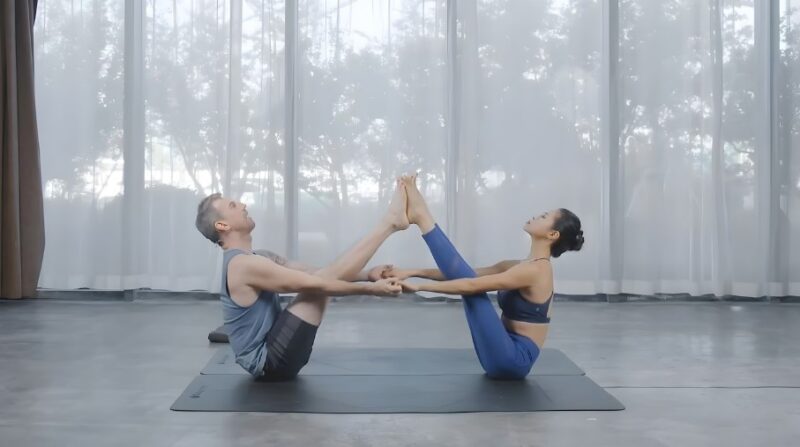
Sit facing each other with your knees bent and toes touching. Hold each other’s wrists or hands. Slowly lift your feet off the ground and press the soles of your feet together, finding balance on your sit bones.
Extend your legs upward, creating a V shape with your bodies. Hold for a few breaths and then slowly lower back down.
5. Twin Trees
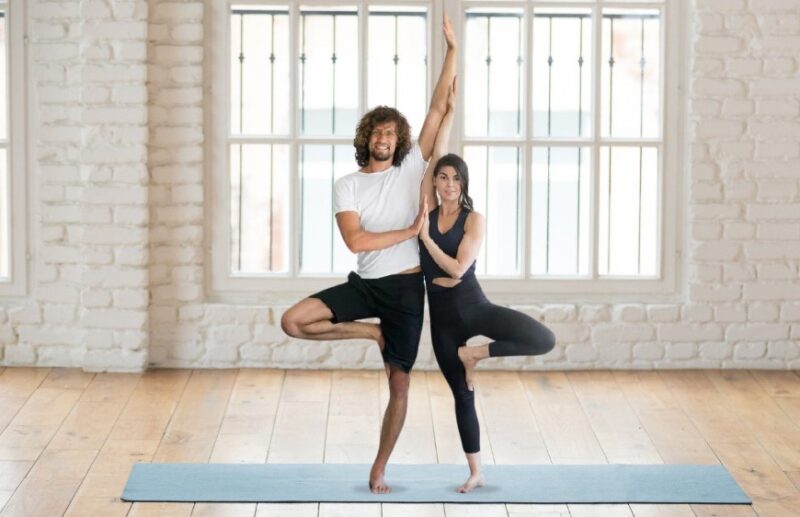
Time to work on balance. Stand next to each other and place your inside arms around each other’s waists.
Place your outside foot against the inside of your standing leg, above or below the knee, and bring your outside arm overhead, touching palms with your partner. Hold this tree pose, finding stability in each other. Switch sides after a few breaths.
6. Partner Chair Pose
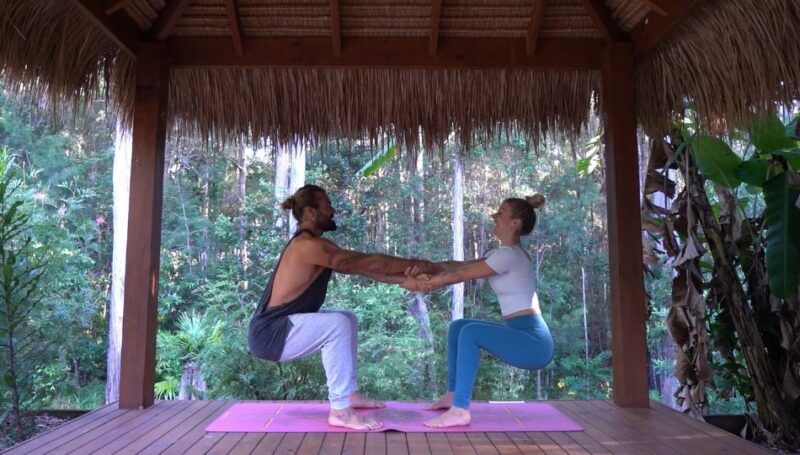
Stand facing each other, about a foot apart. Hold each other’s wrists and lean back, bending your knees and lowering into a squat.
Your weight should be evenly distributed, creating a stable chair pose together. Hold for a few breaths, feeling the burn in your quads and the connection with your partner.
7. Double Plank
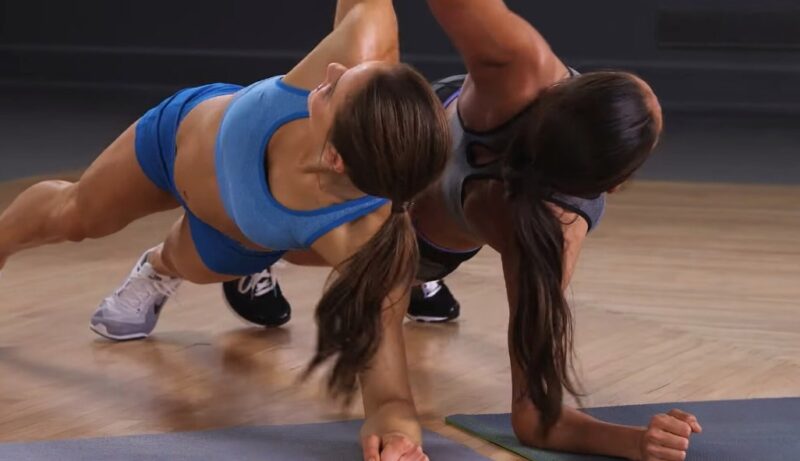
Get into a plank position side by side, with your shoulders aligned. Carefully lift one arm and reach across to touch your partner’s hand, forming a bridge between you.
Hold for a few breaths, then switch sides. This pose strengthens your core and arms while building trust and cooperation.
8. Partner Warrior III
Stand facing each other and hold each other’s wrists. Lean forward, lifting one leg straight back while keeping your standing leg firm.
Your bodies should form a T shape. Look into each other’s eyes to maintain balance. Hold for a few breaths, then switch legs. This pose improves balance and concentration.
9. Back-to-Back Twist
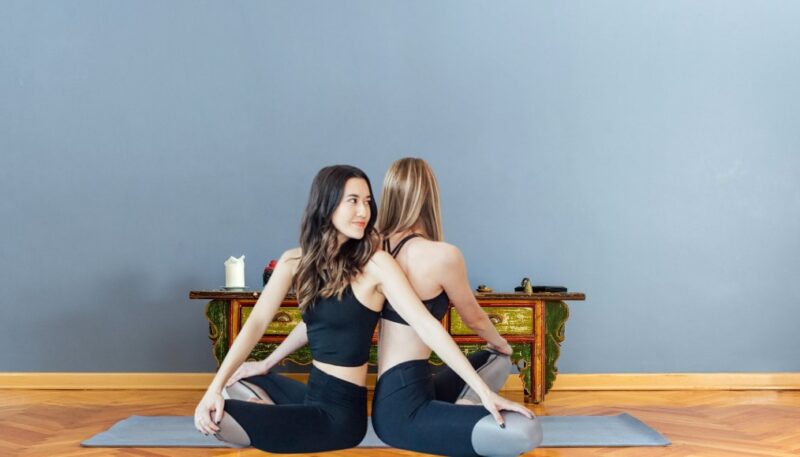
Sit back-to-back with your legs crossed. Place your right hand on your partner’s left knee and your left hand on your own right knee.
Inhale deeply, lengthening your spine, and exhale as you twist to the right. Hold for a few breaths, then switch sides. This pose helps to release tension in your spine and shoulders.
10. Partner Savasana
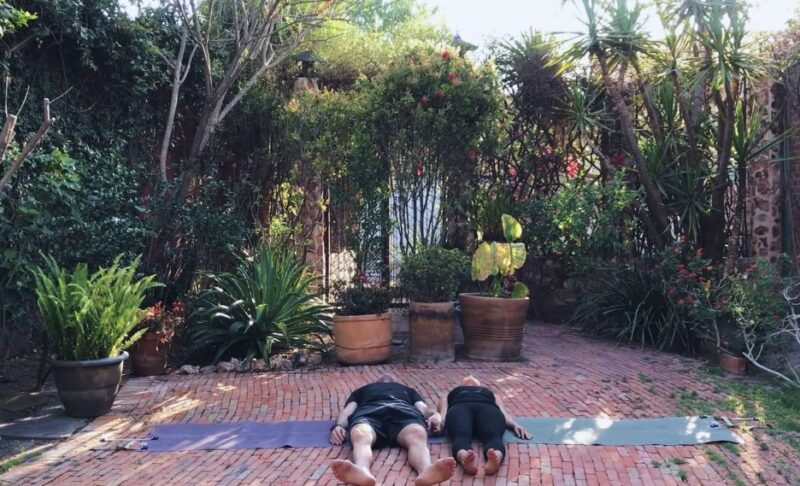
End your session with a relaxing savasana. Lie down next to each other on your backs, arms resting at your sides.
Close your eyes and focus on your breath, feeling the support of your partner’s presence. Stay here for a few minutes, allowing your body and mind to relax completely.
Tips for a Successful Partner Yoga Session
- Communication is key: Always talk to your partner about how each pose feels. Adjust as needed to ensure both of you are comfortable.
- Stay present: Focus on your breath and the connection with your partner. This isn’t just physical exercise but a shared experience.
- Have fun: Don’t take it too seriously. Laugh, smile, and enjoy the process. Mistakes and wobbles are part of the fun.
Benefits of Partner Yoga
Partner yoga comes with a host of benefits beyond the physical, just like some other variations such as somatic yoga. Here are a few reasons why you might want to make it a regular practice:
- Enhanced trust and communication: Working closely with someone builds trust and improves your ability to communicate non-verbally.
- Deeper stretches: Your partner can help you get deeper into poses than you might be able to on your own.
- Emotional bonding: Sharing this experience can strengthen your emotional connection, whether it’s with a friend, family member, or significant other.
- Stress relief: Yoga is known for its stress-relieving benefits, and doing it with a partner can amplify these effects.
FAQs
If you want, you can use blocks or straps to assist with certain poses, but they’re not necessary for beginners.
Communicate with each other, and don’t push beyond your limits. It’s perfectly fine to modify poses to accommodate different levels of flexibility.
Over time, you’ll both notice improvements in your strength, flexibility, and connection.
Consult with a healthcare provider or a knowledgeable yoga instructor to modify poses safely.
Final Thoughts
Partner yoga is a wonderful way to connect with someone special while enhancing your yoga practice. The poses we’ve explored are simple and accessible for beginners, making it easy to get started.
Remember to communicate, stay present, and most importantly, have fun.
Related Posts:





